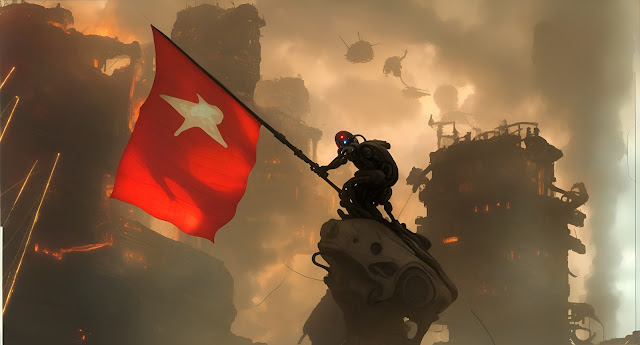More Prompts for models on Leonardo.Ai, DALL-E and Stable Diffusion
We continue our tour through the intriguing prompts of character modeling. As before, let us compare an individual description of the model versus a well-known person. As we have seen in previous postings here, it is easier to achieve an impressive outcome if we use the name of well-known persons such as actors, musicians, or other celebrities. It is simpler for the AI to copy their characteristic features than to create a formerly nonexistent look. As a creator myself, I do not like the thought of millions using the face or the shape of another artist who has no control and no benefit from this.
As for exploring the abilities of the new AI technology, I would, however, use these models to learn how the AI works. One thing is for certain: The AI makers will bring out their very own models, and some have even done that. Leonardo.AI, for example, offers both male and female models that you can dress and make up to your needs. Let me compare what is going on with the YouTube moment: Remember how some artists refused to have their music uploaded to YouTube because they did not get any royalties from it? At the end of the day, that was the time for new YouTube stars like Justin Bieber, who filled that gap. So, step by step, the well-established artists started to publish their whole albums on YouTube to not be forgotten!
If you cannot beat them - join them! That is what I would recommend to all those still well-known stars. Otherwise, you risk being forgotten.
My mission this time was to create a pharaoh queen standing in front of the Sphinx statue in Egypt. To cut a long story short - I failed.
This time I'll start with the best outcome first because this image is just so amazing! The reason for this is simple: There are no images from those times that the AI could use as a blueprint. Anything it can find and use is comics, more or less educational or entertaining movies, or photos from museums. So we have to give the AI a starting point on how we would like the queen to look. I changed the prompt and gave that queen a name of a famous actor, just to give it an idea of how I wanted the pharao queen to look. Not exactly but kind of that style. In my case, I used Halle Berry as a model/blueprint. I also added that she was supposed to be acting. This is the prompt and the outcome is AWESOME!
Prompt: A hyper realistic ultra detailed photograph of the face of Halle Berry acting as a beautiful Pharao queen at night, dramtic light, in front of sphinx statue, luxury ancient outfit and outfit, long hair, dominant pose, detailed symmetric eyes, exquisite detail, 30-megapixel, 4k, Canon EOS 5D Mark IV DSLR, 85mm lens, sharp focus, , exquisite detail, 30-megapixel, 4k, Canon EOS 5D Mark IV DSLR, 85mm lens, sharp focus, intricately detailed, long exposure time, f/8, ISO 100, shutter speed 1/125, diffuse back lighting, award winning photograph, facing camera, looking into camera, monovisions, perfect contrast, High sharpness, facial symmetry, depth of field, ultra-detailed photography, raytraced, global illumination, TanvirTamim, smooth, ultra high definition, 8k, unreal engine 5, ultra sharp focus, award-winning photograph,Professional color grading, soft shadows, no contrast, clean sharp focus, film photography
This is just amazing, awesome, hard to find the words on how it met my imagination of what I wanted to see here.
Another Leonardo.Ai image I created:
I tried to duplicate this with DALL-E and Stable Diffusion but I did not get anything comparable at all.
After lots of trying, I got this nice image from Stable diffusion, using the same prompt and negative prompt at a Guidance scale of 6.9.
The rest was pure crap.
Now, before, when I used a name for the model, I got some results as well, but even Leonardo.AI came up with few realistic images. So here you see the importance, with all AI tools, of the need for something known! AI is not creative. Feed it with something it is supposed to know.
These are the images created before I inserted the Halle Berry context to the Leonardo.AI. They are not really bad, but compared to the results above, they have no strong expression, no "soul".
DALL-E performed even worse, especially when not given a name that it could work with.
Conclusion: Again, it becomes clear that you achieve the best results when using AI if you supply it with context that it can relate to because it has been trained with information on the object. Using pure creativity will not work well with an LLM AI tool as we know them today.





.jpg)


Comments
Post a Comment